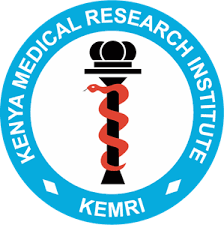
“It was raining so hard, and I had no way to reach the hospital,” recalls Atieno*. Naomi’s* story echoes hers: “It was late at night, and I couldn’t find a motorbike. The roads were flooded, and no one was around to help.”
These are not singular occurrences. They represent the prevailing reality for many women in Homa Bay County, where giving birth outside a health facility is reality rather than the exception. Across the County, too many women still deliver outside health facilities, not out of choice, but because systems designed to protect them are failing.
Unskilled deliveries are widely recognized as a contributor to maternal and neonatal complications and a reminder that policy gaps can have life-and-death consequences. The C-IT DU-IT study (Community Data Use for Integrated Antenatal Care) amplifies the voices of pregnant women and mothers to better understand the barriers and challenges they face in accessing skilled delivery.
Why So Many Women Deliver at Home?
Night-time Deliveries and Transport Challenges
Many testimonials highlighted the frequent commencement of labour during the night, often compounded by lack of transportation. Mothers recalled instances of heavy rain and impassable roads, illustrating the urgent need for improved rural infrastructure and reliable night-time transit options. Atieno* recalls “It was heavily raining and I had no means to reach the hospital.” While for Naomi* “It was late at night, and I couldn’t find a motorbike. It was raining heavily, the roads were bad, and transport wasn’t available.’’ In rural areas, poor roads, insecurity, and the high cost of transport at night leave many women with no option but to deliver at home.

“The nearest facility was closed at night, so I went back home.” “On my way to the facility I was told it was closed, then I decided to go to a traditional birth attendant.” “Nurses were on strike, so I went back home where I delivered,” Recall from three mothers. Even when women attempt to reach health facilities, access is not always guaranteed. Closed health facilities and disrupted services, sometimes due to industrial actions like strikes, further emphasize the gap between healthcare availability and need. These gaps reinforce home deliveries and traditional birth attendants. The narratives highlight an area ripe for policy intervention—ensuring round-the-clock operation and resource availability in health centers, especially in rural locales.
Sudden and Unpredictable Labor
Abrupt onset of labor also emerged as a recurring reason for home delivery. For some mothers, the duration between labor pains and delivery was too short to allow travel. “The pain came abruptly and within minutes I delivered,” one woman said. “I delivered before reaching the health centre,” another recalled. Some mothers admitted to not recognizing early labor signs: “I didn’t know it was labor, it caught me unaware.” These experiences highlight the importance of antenatal education on early signs of labor and birth preparedness planning.
Lack of Support and Companionship
Social support is critical during childbirth, yet many mothers reported being alone when labor began. “I was alone at home at the time of labor,” one explained. Another noted, “My spouse was not around when labor kicked in.” The absence of a birth companion or partner often prevented women from seeking care in time, particularly at night.
Financial Barriers
Despite the official provision of free maternal services in Kenya, hidden costs and a fear of out-of-pocket expenses deter many from seeking skilled care. A mother explained, “I was not registered to SHA, so I feared I wouldn’t afford the delivery fee.” Another admitted, “I didn’t have health insurance.” These financial concerns, combined with transport costs, contribute significantly to delays in seeking skilled care.
Implications for Maternal Health
These shared experiences underscore that unskilled deliveries often result from systemic and socioeconomic barriers, rather than personal choice. These circumstances significantly increase the risks associated with home-based deliveries, including complications, miscarriages, and maternal and neonatal mortality.
Way Forward
Addressing unskilled deliveries requires comprehensive strategies aimed at systemic reform. Key measures include:
- Service Availability: Ensure every facility operates 24/7, with trained staff and reliable power and supplies.
- Transport and Referral Improvements: Invest in rural transport and referral including ambulances and all-weather roads.
- Health insurance: Expand health insurance coverage and eliminate hidden costs that deter care.
- Strengthen Community-Based Emergency Responses: Every village should have a plan for safe delivery.
- Education and Support: Advocating for antenatal education and involving families in maternal health planning
A shared responsibility
The women of Homa Bay have spoken clearly. Their voices are data and testimony revealing that unskilled deliveries are not mere oversights but reflect larger systemic inadequacies and day-to-day challenges. By carefully considering their experiences and addressing the barriers they face, stakeholders can collaboratively work towards encouraging safer deliveries within healthcare facilities.
Because every mother deserves the chance to give life safely not as a privilege, but as a fundamental right.
*Names changed for confidentiality purposes
written by; JOHNBOSCO OMASAJA, Clinical Officer & Research Officer at KEMR


